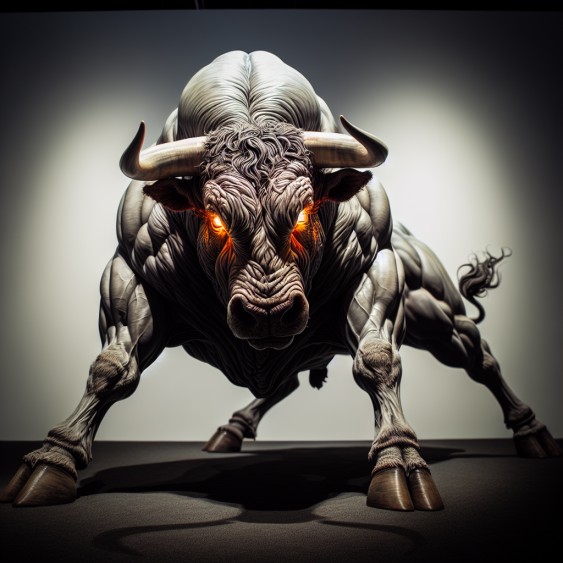
Editor: Vladimir Bajic | Tactical Investor
The Permabear Doomster Paradox: Guardians of Doom or Prisoners of Fear?
Why the Prophets of Collapse May Be Missing the Greatest Opportunities
Feb 27, 2025
The Architects of Caution
In the brutal finance arena, where fortunes are made in moments and lost in seconds, one truth reigns supreme—fear and greed are the twin architects of market history. Between them stands a breed of investors who reject the intoxicating highs of optimism, choosing instead to dwell in the shadows of collapse. These are the permabear doomsters—self-anointed sentinels of prudence, prophets of catastrophe, convinced that every surge is a mirage and every gain is the precursor to an inevitable reckoning.
They are not fools; they are tacticians of caution, architects of defence. They know that markets rise not from virtue but from manipulation, speculation, and the ever-present illusion of stability. They do not deny the game—they refuse to play it on the terms of the blind and the hopeful. To them, history is not a testament to progress but an endless loop of human folly, where greed lays the foundations for collapse, and collapse clears the way for another cycle of greed.
When Prudence Becomes a Prison
But wisdom, when wielded without flexibility, becomes a cage. Their obsession with destruction blinds them to the one immutable truth of power—control belongs not to the one who sees the storm but to the one who knows when to set sail despite it. The market is not a temple of righteousness; it is a battlefield where victory belongs not to those who merely survive but those who strike precisely when the opportunity arises.
Scepticism is a virtue, but paralysis is a disease. Those who cling to fear as their guiding principle may be right once, twice—perhaps even a dozen times—but the market is a beast that rewards adaptability, not stubbornness. Every empire falls, but in its ashes, a new one rises. The real question is not whether the permabears are right about collapse but whether their rigid devotion to doom blinds them to the power of rebirth.
The Fatal Flaw: Missing the Turn of the Cycle
To thrive in the chaos of markets, one must understand a fundamental law: wealth does not come to the righteous, the cautious, or the indignant. It comes to those who master the art of timing, those who strike when fear peaks and retreat when greed takes hold. The doomster watches, warns, and waits—but history does not favour those who stand still. It rewards those who move when others hesitate, seize when others shrink, and dare when others cower.
The Permabear Paradox: Guardians of Doom or Prisoners of Fear?
How Mass Psychology and Cognitive Bias Shape the Eternal Bearish Mindset
The permabear doomster’s worldview is forged in the crucible of history. Every major market collapse is etched into their psyche like a battle scar—undeniable proof that greed-fueled rallies always end in devastation. The Great Depression (1929), the Dot-com bubble burst (2000), and the Global Financial Crisis (2008) are not just distant memories but ever-present warnings.
They argue that markets do not move in a straight line of prosperity but in brutal cycles of euphoria and collapse. No matter how strong, each bull market has ultimately met its reckoning. They point to Japan’s Nikkei, which, after peaking in 1989, remains far from its former glory over three decades later. They cite 1970s stagflation, the 1987 Black Monday crash, and even the 2020 pandemic-driven meltdown as evidence that unchecked optimism is a fool’s game.
Debt, speculation, and leverage—the holy trinity of market excess—always lay the foundation for catastrophe. Rising margin debt, soaring corporate leverage, and central bank interventions are, to them, ticking time bombs. Even today, record-high valuations and a generation of investors conditioned to believe in infinite Fed bailouts have, in their view, set the stage for another brutal reckoning.
The Cognitive Bias That Traps the Permabear
The problem is not whether the permabears are sometimes right. They are. The issue is their inability to break free from their own biases. Anchoring bias keeps them fixated on past crashes, leading them to see every market rally as a setup for another downfall. Confirmation bias reinforces their scepticism, ensuring they only absorb data that supports their views while dismissing counterarguments.
Mass psychology plays into this, as fear is a more powerful motivator than greed. Investors scarred by past crises often overestimate the likelihood of future collapses, leading them to perpetual caution. The irony? Fear itself creates opportunity. Market bottoms are forged in the fire of mass panic, and the greatest fortunes are built by those willing to buy when everyone else is running for the exits.
Risk Mitigation vs. Paralysis
It would be foolish to dismiss permabears entirely—their warnings about risk, debt, and systemic instability counterbalance to unchecked speculation. Benjamin Graham’s margin of safety principle, championed by Warren Buffett, underscores the importance of risk management. However, even Buffett—who thrives on value and caution—has never been a permabear. He buys when markets crash and stays invested when they rise.
History rewards the adaptive, not the fearful. Peter Lynch’s Magellan Fund delivered an average annual return of 29.2% between 1977 and 1990 precisely because he capitalized on market cycles rather than fearing them. John Templeton, another legend, built his empire by buying at points of maximum pessimism, understanding that even the worst downturns give way to recovery.
The Fatal Flaw: Missing the Turn of the Cycle
The market’s greatest secret is that wealth is built not by avoiding risk but by managing it. The permabear doomster sees the storm but never sets sail. They watch, wait, warn—but history does not reward those who stand still. For all its crashes, the stock market has risen over the past two centuries. Those who bet against it indefinitely lose out on the compounding power of time.
The real masters of the game are not those who fear collapse but those who understand cycles—who know when to be cautious, when to strike, and when to pivot. The market is not a morality play where caution is inherently rewarded. It is a battlefield where victory belongs to those who can move with precision, not those who hide in fear.
Final Thoughts: The Doomster’s Dilemma—Caution or Stagnation?
The permabear doomster sees every rally as a deception, every gain as a prelude to disaster. Their obsession with market collapse makes them historians of catastrophe but prisoners of opportunity. They warn they wait and hoard cash—but the market doesn’t reward those who sit on the sidelines forever.
Lynch, Buffett, Soros—these names aren’t legends because they feared downturns. They understood them. Buffett exploits fear; Soros bends reflexivity to his will. Lynch rode cycles instead of resisting them. Each knew that risk was inevitable, but stagnation was fatal.
The fatal flaw of the doomster mindset isn’t in its caution—it’s in its refusal to adapt. History has shown that markets rebound even after the ugliest crashes, often faster and stronger than expected. The investor who clings to fear alone will miss the turn every time.
Success in investing isn’t about permanent optimism or permanent pessimism. It’s about timing, strategy, and the discipline to act when others hesitate. The true master of the game knows that market cycles aren’t warnings to retreat—they’re signals to manoeuvre. Those who fail to grasp this will always be left behind, watching history repeat itself from the wrong side of the trade.
Other Interesting Reads










